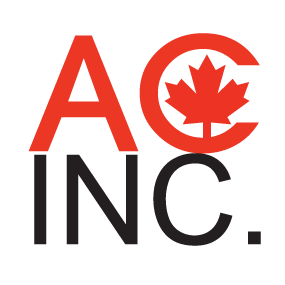A view of the Alberta Legislature building in Edmonton on August 23, 2012. (Ryan Jackson / Edmonton Journal)
.
Alberta is one of Canada‘s prairie provinces. It became a province on September 1, 1905. Alberta is located in Western Canada. With an estimated population of 4,067,175 as of 2016 census.
Alberta’s economy is the sum of all economic activity in Alberta, Canada’s fourth largest province by population. Alberta’s GDP in 2018 was CDN$338.2 billion. Although Alberta has a presence in many industries such as agriculture, forestry, education, tourism, finance, and manufacturing, the politics and culture of the province have been closely tied to the production of fossil energy since the 1940s.
Revenue from oil and natural gas extraction has fueled a series of economic booms in the province’s recent history. Alberta has the “lowest taxes overall of any province or territory” in Canada,due in part to having high resource tax revenues. However, overall tax revenues from oil royalties and other non-renewable sources has fallen steeply along with the drop in global oil prices.
Edmonton is the Capital of Alberta. Another big city in Alberta is Calgary.
Public colleges of Alberta
| College | Location | Founded | Enrollment |
|---|---|---|---|
| Bow Valley College | Calgary | 1964 | 16,000 |
| Grande Prairie Regional College | Grande Prairie | 1966 | 2,000 |
| Keyano College | Fort McMurray | 1965 | 10,000 |
| Lakeland College | Vermilion | 1913 | 7,000 |
| Lethbridge College | Lethbridge | 1957 | 7,200 |
| Medicine Hat College | Medicine Hat | 1965 | 2,700 |
| NorQuest College | Edmonton | 1965 | 10,800 |
| Northern Lakes College | Grouard | 1999 | |
| Olds College | Olds | 1913 | 1,288 |
| Portage College | Lac La Biche | 1968 | |
| Red Deer College | Red Deer | 1964 | 10,000 |
Technical institutes
| Institution | City | Founded | Enrollment |
|---|---|---|---|
| Northern Alberta Institute of Technology | Edmonton | 1962 | 81,000 (8,600 full-time students, 12,600 apprentice registrants and 59,800 part-time students) |
| Southern Alberta Institute of Technology | Calgary | 1916 |
Contact us to admission into any of the schools in Alberta
The Alberta Immigrant Nominee Program (AINP) is Alberta’s Provincial Nominee Program. Through this program, prospective immigrants with the right mix of skills and work experience needed by the province may receive an Alberta Provincial Nomination Certificate.
The AINP consists of the following immigration streams:
-
-
- Alberta Opportunity Stream
- Alberta Express Entry Stream
- Alberta Self-Employed Farmer Stream
- NOTE: The Strategic Recruitment Stream and Employer-Driven Stream were terminated on June 14, 2018.
-
Free Assessment Form
Find out if you qualify for Alberta Immigration Nomination Program.
Alberta Opportunity Stream
This stream allows individuals who meet the stream’s minimum eligibility requirements and are working in Alberta in an eligible occupation to apply for an AINP provincial nomination.
Learn more about the eligibility requirements for the AINP Alberta Opportunity Stream.
The AINP will introduce further changes to the Alberta Opportunity Stream between 2019 and 2021.
Alberta Express Entry Stream
This stream allows the Government of Alberta to nominate eligible candidates from Canada’s Express Entry system. A successful nomination under this stream results in 600 additional Comprehensive Ranking System points.
Learn more about the eligibility requirements of the AINP Alberta Express Entry Stream.
Self-Employed Farmer Stream
This stream allows individuals with farming experience and personal funds to purchase and develop a farm in Alberta to apply for permanent residence. Successful applicants are farm owners/operators who plan to live in Alberta in order to purchase and manage their farming business.
Learn more about the eligibility requirements of the AINP Self-Employed Farmer Stream.
The following streams are now terminated. They were replaced by the Alberta Opportunity Stream on June 14, 2018.
Strategic Recruitment Stream
This stream was available to individuals to apply to the AINP without employer support. It consisted of three different categories:
-
-
- Compulsory and Optional Trades Category – Tradespersons who hold either an Alberta Qualification Certificate or a Recognized
- Trade Certificate may be eligible under this category. Individuals must be residing in Alberta on a valid work permit at the time of application and work in a compulsory or optional trade.
- Engineering Occupations Category – This category was designed for engineers, designers and drafters with Alberta work experience. Applicants must work in one of the designated occupations.
- Post Graduate Worker Category – Individuals who have graduated from a recognized post-secondary institution in Alberta, and who are currently working in Alberta in an eligible occupation on a Post-Graduation Work Permit, may be eligible for this program.
-
Learn more about the eligibility requirements of the AINP Strategic Recruitment stream.
Employer-Driven Stream
This stream was available for employers to nominate workers to the AINP for Canadian immigration. This stream consisted of three sub-categories:
-
-
- Skilled Worker Category – For individuals with a permanent, full-time job offer in an eligible skilled occupation. Individuals were not required to be working in Alberta at the time of application.
- International Graduate Category – For individuals who have graduated from a recognized post-secondary institution in Canada, hold a valid Post-Graduation Work Permit, and have received a permanent, full-time job offer from an Alberta employer.
- Semi-Skilled Worker Category – For temporary foreign workers who have received a permanent, full-time job offer from an Alberta employer in an eligible semi-skilled occupation.
Learn more about the eligibility requirements of the AINP Employer-Driven stream.
-
Sources-Wikipedia; Alberta.ca



